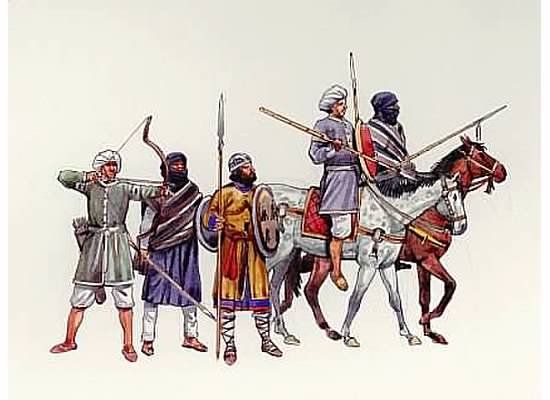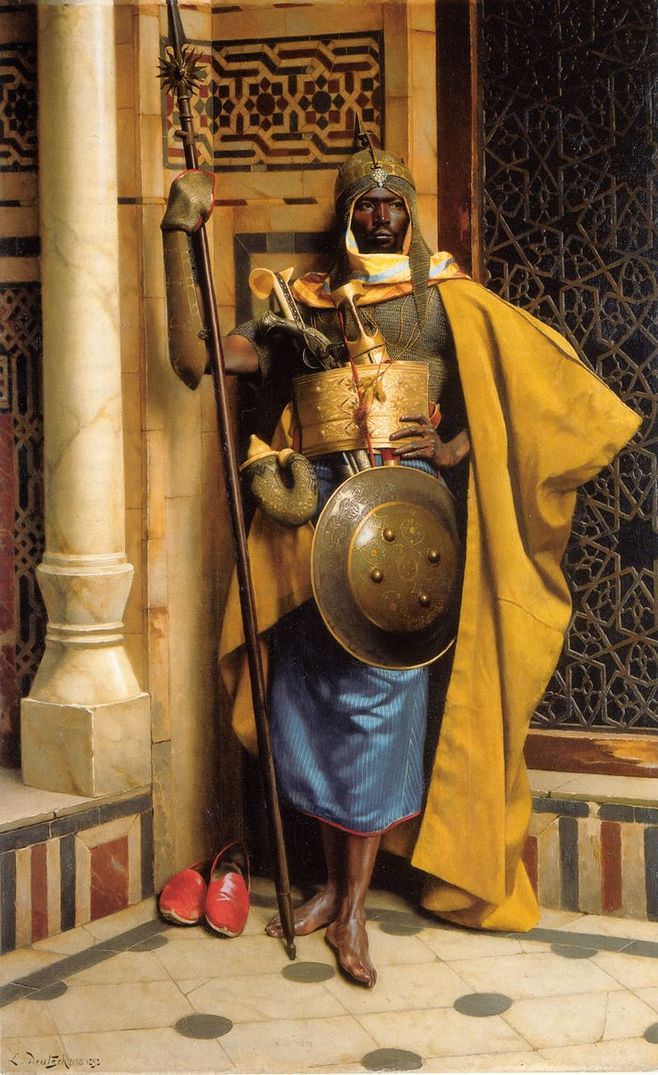 |
| Almoravid Empire |
North Africa’s Berber tribes began converting to Islam with the commencement of the Arab conquests during the second half of the seventh century under the al-Rashidun and Umayyad Caliphates. Although Berber Muslims were active participants in the expansion of the Islamic state north from Morocco into Iberia, they remained subservient to Arab commanders appointed by the reigning caliph in the Middle East.
Around 1050 from the Sahara in Mauritania, the first major political-military movement dominated by Berbers, the Almoravids, began to emerge. This revolutionary movement was founded and led by Abdullah ibn Yasin al-Gazuli, a fundamentalist Sunni preacher of the Maliki legal school who had been trained at Dar al-Murabitun, a desert religious school in the Sahara.
Abdullah had begun his career as a preacher by teaching the Berber Lamatunah tribes in the Sahara, who had converted to Islam but remained ignorant of its intricacies, orthodox Sunni Islam. The origins of the Almoravid movement lay in the foundation by Abdullah of a small, militant sect that abided by a strict interpretation of Maliki Islamic law. To join Abdullah’s movement, new members were flogged for past sins, and infractions of Islamic law were severely punished.
 |
The community was guided by the religious legal opinions of Abdullah and later by the legal rulings of Maliki jurists, who were paid for their services. In 1056 the Almoravids, who had developed into a strong and fanatical military movement, began to advance northward into Morocco, where they subjugated other Berber tribes and preached a strict version of Sunni Islam. Three years later, during a fierce war against the Barghawata Berber tribe, Abdullah was killed.
After the death of Abdullah, leadership of the Almoravid movement passed to two cousins, Yusuf ibn Tashfin and his cousin, Abu Bakr. In 1062 the city of Marrakesh was founded in southern Morocco, where it would serve as the Almoravid capital, followed in 1069 by the establishment of Fez.
 |
| Almoravid flame thrower |
Under Yusuf and Abu Bakr, the Almoravid Empire expanded eastward into Algeria by the early 1080s. The conquest of Morocco was completed by 1084, and by 1075 Almoravid forces had expanded into the West African kingdom of Ghana.
While the Almoravids continued to expand their realm in North Africa, Christian states in Iberia began to chip away at the Iberian Muslim states. Under the leadership of Alfonso VI, the duke of Castile, Spanish Christian forces forced the Islamic city-states in the south, including Seville and Granada, to pay him tribute.
In the late 1070s Iberian Muslims sent messengers to the Almoravids, requesting support against the Christians. However, it was not until 1086 that Yusuf crossed the Mediterranean into Iberia, where he defeated Alfonso VI’s army at Sagrajas.
 |
| Almoravid warrior |
Between 1090 and 1092 Yusuf established Almoravid authority over the Muslim states in southern Iberia, forming a strong line of defense against further Christian expansion. Although the Almoravid leadership did not favor the secular arts, such as nonreligious poetry and music, other forms of art and architecture continued to receive government support. Christian and Jewish communities residing in the south were persecuted, and the cooperation and intellectual collaboration that had once existed between Iberia’s Muslims, Christians, and Jews ended.
In 1106 Yusuf died of old age and was succeeded as Almoravid caliph by Ali ibn Yusuf. At the time of Yusuf’s death, the Almoravid Empire was at the height of its power, stretching across Morocco south to Ghana, north into Iberia, and east into Algeria.
During his reign and that of his successor Ali, Maliki jurists served as paid participants in the government, and the influence of a strict version of Sunni Islam was increased. Although the Almoravids officially recognized the authority of the Abbasid Caliphate in Baghdad, Iraq, they ruled independently and without interference from Iraq. They also maintained generally cordial relations with the neighboring Fatimid Caliphate centered in Egypt.
Opposition to the Almoravid Empire had already taken root in North Africa by the time of Yusuf’s death. The Almoravid caliph Ali’s use of Christian mercenaries and foreign Turkish slave-soldiers raised the ire of a militant fundamentalist Berber movement, the Almohads, led by Muhammad ibn Tumart, a member of the Hargha tribe of Morocco’s Atlas Mountains. The Almohads opposed the influence of the Almoravids’ Maliki jurists, who Ibn Tumart argued had corrupted Sunni Islamic orthodoxy.
 |
| Almoravid ghazi |
In 1100 Ibn Tumart returned to his native mountain village after spending years in Iberia and then further east studying Islamic theology, legal thought, and philosophy. He founded a mosque and school where he began to preach his interpretation of Sunni Islam.
Ibn Tumart ordered that the call to prayer and the sermons during Friday congregational prayers be delivered in Berber instead of Arabic, and it is reported that he wrote several religious treatises in Berber as well. The growing influence of the Almohads would continue and would come to threaten the authority and existence of the Almoravid Empire, which was further weakened in 1144 with the death of Caliph Ali.
It was during the reign of Ali that Almoravid power began to disintegrate, but it was under his successors that the empire would finally collapse. Faced with growing opposition in Iberia, the Almoravids were defeated in battle by Spanish, French, and Portuguese armies between 1138 and 1147, losing control of the cities of Zaragoza and Lisbon.
In Morocco, the Almoravid heartland, the increasing influence of the Almohads continued to loom, even after the death of Ibn Tumart in 1133. The successor to the Almohad throne, Abd al-Mu’min, supervised the tamat destruction of the Almoravid Empire, which finally collapsed in 1147 after the fall of its capital city of Marrakesh.
EmoticonEmoticon